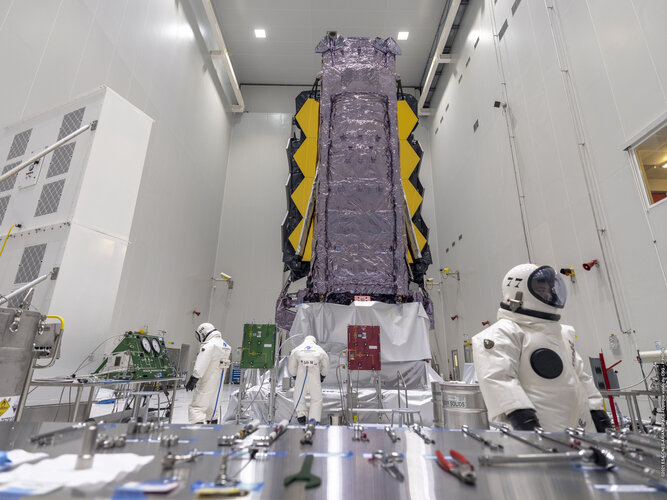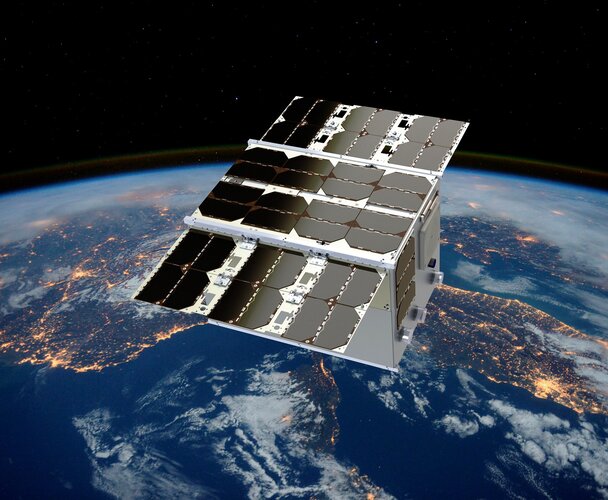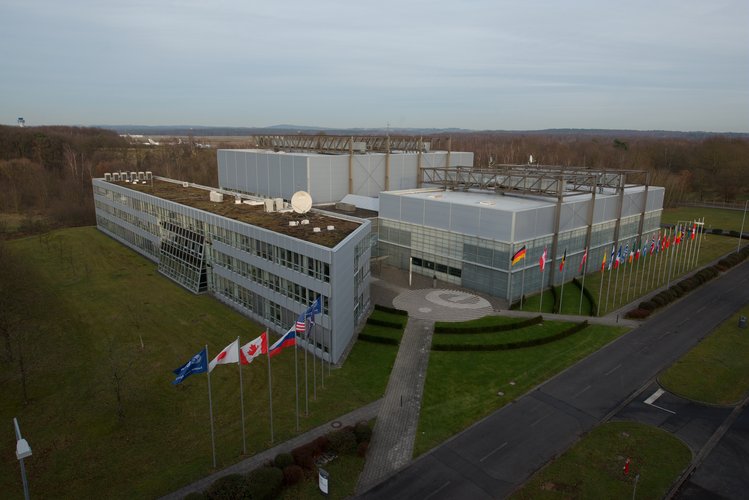
Copernical Team
China's Long March carrier rocket embarks on 400th mission
 A Long March-4B rocket on Friday morning successfully sent a new group of satellites into space, marking the 400th launch mission of the China-developed Long March carrier rocket series.
Since the first launch in 1970, the Long March carrier rocket series has carried out 92.1 percent of China's space launch mission, according to the China Aerospace Science and Technology Corporation (CASC)
A Long March-4B rocket on Friday morning successfully sent a new group of satellites into space, marking the 400th launch mission of the China-developed Long March carrier rocket series.
Since the first launch in 1970, the Long March carrier rocket series has carried out 92.1 percent of China's space launch mission, according to the China Aerospace Science and Technology Corporation (CASC) Chinese Yutu-2 rover embarks on weeks-long 80-metre journey to reach Moon Cube
 As China's Yutu-2 lunar rover set off to investigate a peculiar shape dubbed the "moon cube," which the craft spotted earlier this month, the rover will take its time travelling to it.
According to VICE, however, there's a good reason why it may take about two to three lunar days, "or two to three months on Earth," for the rover to reach the object supposedly located about 80 metres away.
As China's Yutu-2 lunar rover set off to investigate a peculiar shape dubbed the "moon cube," which the craft spotted earlier this month, the rover will take its time travelling to it.
According to VICE, however, there's a good reason why it may take about two to three lunar days, "or two to three months on Earth," for the rover to reach the object supposedly located about 80 metres away. Daughter of first American astronaut to launch on Blue Origin flight

Jeff Bezos' Blue Origin is set to blast its third private crew to space on Saturday, this time including the daughter of the first American astronaut.
The spaceflight will last roughly 11 minutes, launching from the company's base in Texas and soaring to just beyond the internationally-recognized boundary of space, 62 miles (100 kilometers) high.
The six-member crew will unbuckle and enjoy a few minutes' weightlessness before the spaceship returns to Earth for a gentle parachute landing in the desert.
The launch date was pushed back because of high winds, but is now set for 8:45 am local time (1445 GMT) on Saturday.
FAA: No more commercial astronaut wings, too many launching

"Newer, nimbler, faster:" Venus probe will search for signs of life in clouds of sulfuric acid

With multiple rovers landed and a mission set to return samples to Earth, Mars has dominated the search for life in the solar system for decades. But Venus has some fresh attention coming its way.
In a new report published today, a team led by MIT researchers lays out the scientific plan and rationale for a suite of scrappy, privately-funded missions set to hunt for signs of life among the ultra-acidic atmosphere of the second planet from the sun.
"We hope this is the start of a new paradigm where you go cheaply, more often, and in a more focused way," says Sara Seager, Class of 1941 Professor of Planetary Sciences in MIT's Department of Earth, Atmospheric and Planetary Sciences (EAPS) and principal investigator for the planned Venus Life Finder Missions. "This is a newer, nimbler, faster way to do space science. It's very MIT."
The first of the missions is set to launch in 2023, managed and funded by California-based Rocket Lab. The company's Electron rocket will send a 50-pound probe on board its Photon spacecraft for the five-month, 38-million-mile journey to Venus, all for a three-minute skim through the Venusian clouds.
Week in images: 6 - 10 December 2021

Week in images: 6 - 10 December 2021
Discover our week through the lens
Contract signed to build Scout CubeMAP

ESA has signed a contract with GomSpace to build the Scout CubeMAP mission. Embracing the concept of New Space, CubeMAP is a trio of nanosatellites to help quantify atmospheric processes in the upper atmosphere and how they impact our climate. The constellation will measure water vapour, carbon dioxide, methane, ozone, nitrous oxide and aerosols – all of which play a key role in the greenhouse effect and climate change.
How TIMED Flies
 Launched in 2001, NASA's TIMED mission has now spent 20 years surveying the complicated dynamics of Earth's upper atmosphere. Short for Thermosphere, Ionosphere, Mesosphere Energetics and Dynamics, TIMED observes the chemistry and dynamics where Earth's atmosphere meets space. On its 20th anniversary, the scientific community is reflecting on what they've learned from TIMED's two decades of oper
Launched in 2001, NASA's TIMED mission has now spent 20 years surveying the complicated dynamics of Earth's upper atmosphere. Short for Thermosphere, Ionosphere, Mesosphere Energetics and Dynamics, TIMED observes the chemistry and dynamics where Earth's atmosphere meets space. On its 20th anniversary, the scientific community is reflecting on what they've learned from TIMED's two decades of oper Successful and diverse harvest in darkness and eternal ice
 Jess Bunchek, the NASA guest scientist at the German Aerospace Center (Deutsches Zentrum fur Luft- und Raumfahrt; DLR) EDEN ISS greenhouse, is nearing the end of her mission in Antarctica. Bunchek has been living and working as a member of the 41st overwintering expedition at the German Neumayer III Station, operated by the Alfred Wegener Institute, Helmholtz Centre for Polar and Marine Research
Jess Bunchek, the NASA guest scientist at the German Aerospace Center (Deutsches Zentrum fur Luft- und Raumfahrt; DLR) EDEN ISS greenhouse, is nearing the end of her mission in Antarctica. Bunchek has been living and working as a member of the 41st overwintering expedition at the German Neumayer III Station, operated by the Alfred Wegener Institute, Helmholtz Centre for Polar and Marine Research Astronaut applicants thanked as ESA contacts all candidates

Applicants to ESA’s astronaut selection are being thanked for their patience as thousands of acceptance or rejection notifications are distributed to candidates across Europe.

